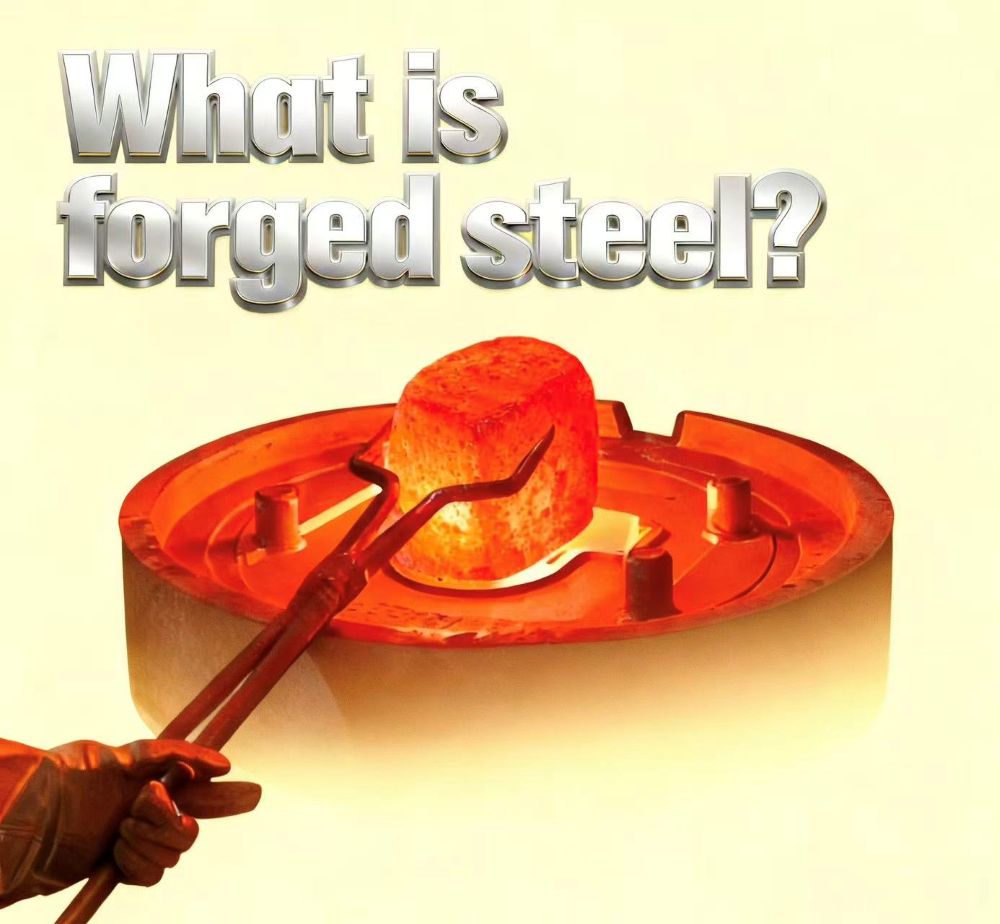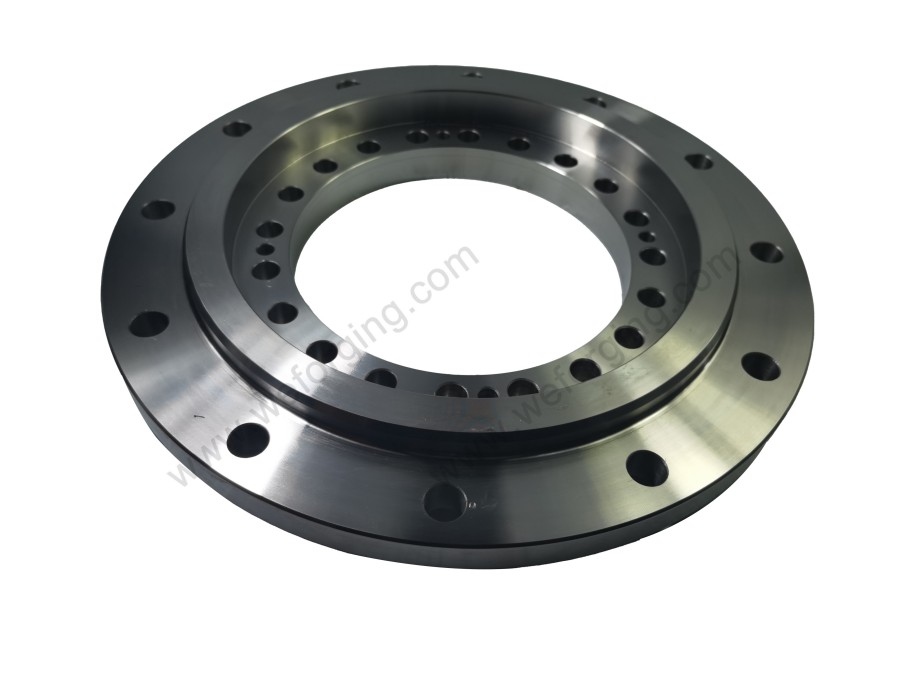What Is Forged Steel?
Forging is one of the oldest and most trusted metal forming processes, creating components that withstand heavy loads and extreme conditions. But what is forged steel, and why does it remain essential today? It refers to metal heated and shaped under high compressive force, refining grain flow and improving strength, toughness, and fatigue resistance compared with cast or welded materials.
Modern forging combines automation, CNC machining, and precision heat treatment to achieve high accuracy and reliability. As a result, forged steel remains fundamental to industries such as automotive, energy, and heavy equipment—continuing to define modern standards of strength and performance.

What Is Forged Steel
Forged steel refers to steel that has been plastically deformed under compressive forces, usually at elevated temperatures, to refine its internal structure and enhance its mechanical properties. During the forging process, a heated billet is shaped between dies or anvils, causing the metal’s grain flow to align with the part’s geometry. This directional grain orientation increases tensile strength, fatigue resistance, and impact toughness compared with cast or machined bar stock. Forging also minimizes internal voids and discontinuities, resulting in a dense, homogeneous microstructure. Depending on the required strength and dimensional tolerance, forging may be performed as hot, warm, or cold forging, each offering specific advantages in ductility, surface quality, and accuracy.
Types of Forged Steel Processes
Modern Modern forged steel manufacturing encompasses several key methods, each designed to achieve specific mechanical and dimensional outcomes. Below are the main types commonly used in industrial production:
- Open Die Forging:
In this process, heated billets are pressed between flat or contoured dies without fully enclosing the material. It is primarily used for large shafts, rings, and cylinders. The open die method provides excellent internal soundness, refined grain flow, and superior strength for heavy machinery and energy components. - Closed Die Forging:
Here, the metal is compressed within precision-shaped dies that fully encapsulate the material. This process is ideal for gears, flanges, couplings, and connecting rods that require complex geometry and tight tolerances. It ensures repeatability, dimensional accuracy, and high surface quality. - Hot Forging:
Conducted at temperatures typically between 950–1250°C, hot forging enhances metal plasticity and reduces the risk of cracking during deformation. This method is preferred for producing parts that demand high ductility, such as automotive or hydraulic components. - Cold Forging:
Performed near room temperature, cold forging delivers exceptional surface finish and precise dimensional control. The strain hardening that occurs increases yield strength, making it suitable for fasteners, pins, and precision connectors. - Drop Forging:
Drop forging uses repeated hammering or pressing in a closed die to form parts with defined shapes. It combines high productivity with excellent mechanical integrity, making it widely adopted for automotive and aerospace applications.
Together, these forging techniques allow manufacturers to balance strength, precision, and efficiency, ensuring forged components meet the performance needs of modern industries.
Forging Products Availability
Forged steel components cover a wide range of mechanical applications, combining high strength, structural integrity, and precise geometry.Different product types serve distinct engineering needs—from power transmission to structural connection.
The following five main forging products represent the core of industrial forging applications.
Main Forged Products:
- Forged Rings – Used in bearing races, gear rings, and wind turbine hubs. Their continuous grain flow ensures high concentricity and balance.
- Forged Shafts – Applied in transmission systems, drive assemblies, and heavy machinery where torque strength and dimensional precision are essential.
- Forged Flanges – Provide reliable sealing and load transfer in piping systems, valves, and pressure vessels.
- Forged Bars – Serve as versatile blanks for shafts, bolts, and mechanical connectors, offering good machinability and strength.
- Forged Discs – Commonly used in turbines, compressors, and rotating assemblies to maintain balanced operation under pressure.
Property | Forged Steel | Cast Steel |
Manufacturing Process | Metal is shaped under compressive force; no melting is involved. | Metal is melted and poured into molds to solidify. |
Grain Structure | Directional grain flow, refined and continuous for higher strength. | Random grain orientation, possible micro-porosity. |
Strength & Toughness | High tensile and fatigue strength; excellent impact resistance. | Moderate strength with lower impact toughness. |
Dimensional Accuracy | High precision after CNC machining; excellent repeatability. | Accuracy depends on mold quality and cooling rate. |
Smooth surfaces achievable with controlled machining and polishing. | May require additional finishing to remove casting marks. | |
Applications | Shafts, gears, flanges, and couplings. | Pump housings, valve bodies, and casings. |
Applications of Forged Steel
Forged steel serves as a foundation material across numerous industries due to its exceptional mechanical strength, stability, and adaptability. Below are key sectors where it plays an essential role:
- Automotive Industry:
Forged steel components such as crankshafts, connecting rods, gears, and axle parts ensure efficient torque transfer and fatigue resistance. Because these parts endure high cyclic stresses, forged steel provides the durability needed for long engine life and reliable drivetrain performance. - Aerospace Engineering:
Forged steel is vital for landing gear, engine mounts, and structural joints. These components require high impact strength and precise dimensional control, which forged steel achieves through refined grain flow and advanced heat treatment. - Construction and Mining Equipment:
Heavy machinery—such as excavators, hydraulic cylinders, and lifting assemblies—relies on forged steel for load-bearing frames and pressure-resistant connections. Its resistance to impact and deformation ensures dependable operation in demanding work environments. - Industrial and Marine Applications:
Forged steel flanges, couplings, and shafts are widely adopted in industrial machinery and marine propulsion systems. Their corrosion resistance and fatigue strength enhance service life even under continuous vibration and exposure to harsh conditions.
Through these diverse applications, forged steel demonstrates unmatched versatility and remains a cornerstone material for modern mechanical systems.
Conclusion
Forged steel continues to define strength and precision in modern manufacturing. Its superior grain structure, fatigue resistance, and load-bearing capacity make it indispensable across industries—from automotive to aerospace and energy. Through integrated forging and CNC machining processes, Weforging ensures that every component delivers long-term durability and consistent performance.
For project consultations, OEM collaborations, or custom forged solutions, contact Weforging today. Our engineering team will assist you with material selection, design optimization, and production support to meet your exact specifications.
F.A.Q.
Forged steel is shaped by applying pressure to heated billets, refining the grain structure and improving strength. Cast steel, on the other hand, is produced by pouring molten metal into a mold, which may contain microscopic porosity. Therefore, forged offers higher fatigue resistance and better structural integrity.
It provides excellent strength, toughness, and dimensional stability. Its refined grain flow enhances fatigue life and impact resistance, making it ideal for components under heavy or cyclic loads, such as gears, shafts, and flanges.
Heat treatment plays a crucial role in optimizing the mechanical properties of forged steel.After forging, the metal’s internal structure becomes denser but can also retain residual stresses.Processes such as normalizing, quenching, and tempering refine the grain structure, relieve stress, and enhance hardness, strength, and toughness.Proper heat treatment ensures that forged steel components maintain their dimensional stability and fatigue resistance during long-term operation, especially in demanding applications such as turbines, shafts, and pressure systems.


